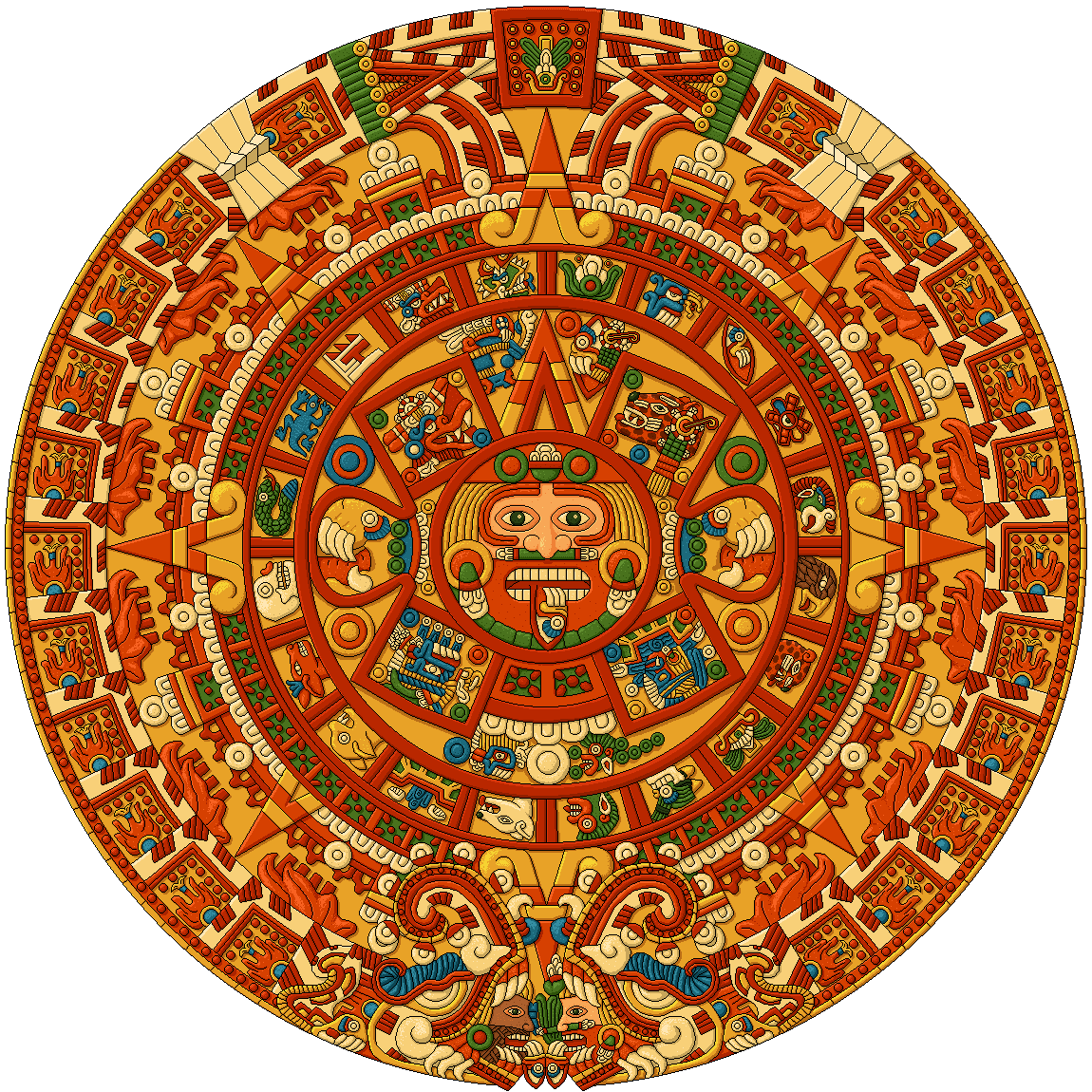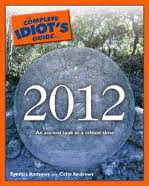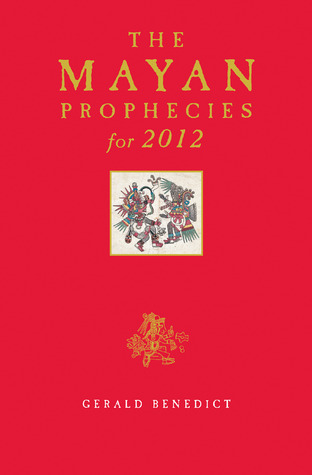12-21-2012 Mayan End Age

 Mayan Calendar: „Both the Hopis and Mayans recognize that we are approaching the end of a World Age… In both cases, however, the Hopi and Mayan elders do not prophesy that everything will come to an end. Rather, this is a time of transition from one World Age into another. The message they give concerns our making a choice of how we enter the future ahead. Our moving through with either resistance or acceptance will determine whether the transition will happen with cataclysmic changes or gradual peace and tranquility. The same theme can be found reflected in the prophecies of many other Native American visionaries from Black Elk to Sun Bear.“ — Joseph Robert Jochmans
Mayan Calendar: „Both the Hopis and Mayans recognize that we are approaching the end of a World Age… In both cases, however, the Hopi and Mayan elders do not prophesy that everything will come to an end. Rather, this is a time of transition from one World Age into another. The message they give concerns our making a choice of how we enter the future ahead. Our moving through with either resistance or acceptance will determine whether the transition will happen with cataclysmic changes or gradual peace and tranquility. The same theme can be found reflected in the prophecies of many other Native American visionaries from Black Elk to Sun Bear.“ — Joseph Robert Jochmans
„An Apocalypse (Greek: „lifting of the veil“ or „revelation“) is a disclosure of something hidden from the majority of mankind in an era dominated by falsehood and misconception, i.e. the veil to be lifted.“ — Wikipedia
„BIG SUR, Calif. — At twilight, not far from a cliff overlooking the Pacific Ocean, a Mayan shaman spoke of the return of Kukulkan to dozens of listeners sitting on the floor inside a yurt: As Venus, a planet of special significance to the ancient Mayans, passed directly between the Sun and Earth in June, the forces out there were heralding the return of Kukulkan, the snake deity, and the start of a new age of spiritual enlightenment in 2012.
‚The cosmos is talking to us — we need to listen,‘ said the shaman, Miguel Angel Vergara. ‚Kukulkan shines in the infinite. Kukulkan is the sacred energy beating in every atom. Kukulkan is the feathered serpent living in your heart forever.‘ “
New York Times (August 19, 2012)
„You get the sense that the end of the world is a commercial project,“ Mikhail Degtyaryov told the newspaper Izvestiya. „Just look at how many swindlers are trying to make money on this affair, starting from the pseudo-magicians, ending with people selling groceries and other rations.“
New York Times (December 1, 2012)
2012: THE MAYAN PROPHECY EXPLAINED

„Although many movies and books claim to show what the Mayan’s predict will happen in 2012, the ancient Maya say surprisingly little about what will actually occur at the end of the calendar. In this guide, we will look at the katun prophecies and what they reveal.
The Mayan Prophecy in a Nutshell
There are two sides to this coin. On the one hand, we’re going through a difficult time leading into 2012. These difficulties are the result of our own disharmony of spirit. Governments and religions will let us down and lead us astray. Resources will be scarce and people will be afraid. Natural disasters will increase through the period and the age will end with destruction by fire.
On the other hand, Kukulkan returns representing a rising of consciousness. People are reunited with the wisdom of the past as a new age unfolds. Not only does Kukulkan return but Mayan masters and initiates also return to help spread the wisdom of the Maya. People are drawn to the temples and ruins to remember the past age of knowledge. It’s a time for recording and writing things down.
As we return to lost wisdom, we also return to living with the natural cycles represented by the calendars. People begin to elevate their own consciousness through the evolution of the energy centers in the body. We write the next phase of earth, the next age, together as people from all places unite.
The Present Katun
It’s believed by those who follow the 2012 end date that this katun began on April 6, 1993, and ends with the Long Count/creation age on December 21, 2012. This katun warns of scarcity of resource, food shortages, and many people dying. It also talks of ‚remembering (old) knowledge and writing it down.‘
The Mayans predicted the coming of the Spanish to Maya lands, stating that their knowledge would have to retreat before the advent of the ‚wooden cross,‘ but would resurrect again at the end of the calendar. TheChilam Balam states that Kukulkan (Quetzalcoatl) returns during this period to establish the new world and guide the way. The Maya believed in reincarnation and talk of the return of the Mayan masters prior to 2012. The Chilam Balam writer says: ‚My part is to interpret to you, your part, later, as well as my own, is to be born again.‘ The purpose of coming back during the end times is to spread the wisdom and knowledge of the Maya, to ease the time of the purification, and to open the door to the transformation.
End of the World, 2012–2032
The Chilam Balam states: ‚This is a time of total collapse where everything is lost. It is the time of the judgment of God. There will be epidemics and plagues and then famine. Governments will be lost to foreigners; wise men, and prophets will be lost.‘
The katuns have a number of prophecies relating to the ‚end of the world,‘ which comes at the completion of the Great Cycles. A katun lasts for 20 years, so a katun prediction covers the entire 20-year period.
The katuns refer to this time as the final days of misfortune at the end of the Long Count calendar. They predict earth changes in the form of storms, earthquakes, famine, and pestilence. In this time people lose confidence in religion, priests, government, and officials. In fact even the omens that connect the Maya to the gods are questioned. The omens themselves are said to be broken by the dishonor prevalent in the times.
In The Book of the Jaguar Priest, Maud Worcester Makemson translates from the Chilam Balam the actual events of the end times. From the sound of it, the Sacred Tree of Life itself falls. The days turn upside down, stones fall from the sky, and fire consumes everything. Many think this description sounds a lot like a massive super volcano and a magnetic pole shift where the earth actually turns onto a new axis. The description of the Sacred Tree of Life falling might describe the Milky Way changing position in the sky.
After speaking of great destruction and disillusionment, the Chilam Balamends by saying, ‚These are the words which must be spoken: the prophecies are a solemn trust from ancient times. They are the first news of events and a valuable warning of things to come.‘
After 2012
What happens to the calendars if we have moved into the sixth age? Does the katun cycle just roll over and reset like your car’s odometer? This is how it worked in the past, but the sixth age is unknown. If the katuns do just roll over, here is the next in the cycle.
Katun 11 is the first katun and therefore always opens the new cycles. This was the katun that brought Spanish rule to the Yucatan. It predicts the end of traditional rule and the arrival of foreigners that invade and disperse the population. It also predicts scarcity of resources and food.
But again, there are two sides to the coin. Even as the katun talks of difficulty and death, it also predicts great opportunity. It’s a time when gifts are given by the gods. In fact, the gods actually come to visit, bringing enlightenment. They talk of life after death. The destruction is spoken of as purification: cleansing the old before creation of the new. The Chilam Balam claims that after the time of trial and tears the ‚divisions in the earth will be one; one Ahau in the heavens, one Ahau in the earth as the ancient prophecies say.‘ This seems to be the Mayan version of ‚As above, so below.‘ After this time of travail the Golden Age of the Maya begins.
Looking at the traditions and history of the Maya may give some insights into what’s to come. The general Maya tradition believes that cycles of any length end with purification, followed by renewal. With 2012 prophesied to be the end of a cycle, the Maya seem to point to us being in for a rough ride—but who knows what the future will bring? In the meantime, carpe diem!“
Synthia Andrews and Colin Andrews, The Complete Idiot’s Guide to 2012
THE PROPHECY OF THE RETURN OF A SUPREME BEING

„Would that he might return from the west, uniting us in commiseration over our present unhappy plight! This is the fulfilment of the prophecies of Katun 5 Ahua. … God grant that there may come a Deliverer from our afflictions, who will answer our prayers in Katun 1 Ahua!!
Chilam Balam of Tizimin
THE MESSAGE
The prophecy of the return of a Supreme Teacher or Being speaks of Quetzalcoat, known to the Maya as Kukulcan. However, there is a growing belief that this will not take the form of an actual return or reincarnation, but of people themselves taking on the character and attributes of the Supreme Being through their own spiritual evolution, to the point of overcoming the duality of the subject-object relationship. It is a prophecy the resonates with all religions.
COMMENTARY
Much lies behind this prophecy, and to understand its significance we need to trace in a little background.
Mayan mythology has, to a great extent, pivoted around Quetzalcoat, the plumed or feathered serpent, one of the principal gods of Mesoamerican religion, whom the Maya called, Kukulcan. His cult and its influence was not confined to the Toltec-Maya, and his emblem, the feathered serpent, is found throughout Mexico. Much of Mesoamerican religion, and one of the principal Mayan prophecies, was focused on the belief that Kukulcan would return. This belief was so deeply embedded, that in November 1519, Montezuma II, ruler of the Aztecs, virtually surrendered to Cortez believing him to be either an emissary of Quetzacoatl or the god himself, newly incarnated….
Aluna Joy Yaxk’in suggests that, ‘Kukulcan (the Feathered Serpent God, also known as Quetzalcoat) is to the New World what Christ is to Europe: the centre of a religious cosmology and the pre-eminent symbol of the civilized nations of Mesoamerica’.
It is hardly surprising that Spanish missionaries, like the 17th-century Father Avendano, rationalized the prophecy of the coming of Kukulcan as the Spanish conquest and the Maya’s conversion to Christianity. However, behind the missionary’s Christianization of the prophecies lies a genuine and very ancient native tradition. The American anthropologist and linguist Alfred Tozzer explained that, ‘these prophecies were doubtless adapted by the Spanish to proselytizing purposes but they were fundamentally to have been native accounts of the return of Kukulcan, one of the culture heroes of the Maya, and corresponding to the Quetzalcoat of the Mexicans’. It is therefore, beyond question, that the prophecies of the jaguar Priests are embedded in ancient tradition, and predate Christian influence.
Quetzalcoatl is frequently represented as a feathered or plumed serpent, and because of this serpent symbolism, the prophecies of the return of Quetzalcoatl/Kukulcan have important associations with the esoteric parallel of Hinduism’s secret knowledge of k’ulthanlini (kundalini) and the seven chakras, the body’s centres of energy. Although there is a tradition before the Christian era Mayan elders and priest travelled to India taking their knowledge with them, the influence remains conjectural. Even so, it is remarkable that the Maya taught about the seven power centres of the human body by which means the energy of the cosmos was assimilated and expressed. It may well be a striking example of parallel development. In Hindu teaching, kundalini represents a serpent-like potential curled at the base of the spine. Specific techniques of yoga and meditation can ‘awaken’ this serpent whose energy rises through the seven chakras; training in this technique under the necessary guidance of a guru or teacher is one of the many ‘paths’ to liberation. In Mayan mythology, the source of this energy lies in the Earth from where it begins to move; first, to the base of the spine, then through each of the seven chakras. This vital link between the Earth and the body is one of the central themes of the prophecies that speak of the urgent need of humanity to recover its intimate relationship with Nature…
Thus far, we have a prophecy that speaks of the return of a god which, understood literally or otherwise, will liberate earthbound energies, and revitalize our consciousness and the life of the spirit. Beyond this, the prophecy carries a message of broader significance pointing to a Supreme Being, that is, to the Mayan monotheism of one true god, Hunab K’u.
In Mayan tradition, many of the prophecies of the return of Kukulcan are found in the Books of Chilam Balam, for example, in that of Tizimin. Here, various names for the god are used, but it is already clear that the prophet’s intention was to establish the one god represented by the different names. In the Book of Chilam Balam of Chumayel, the section, ‘Prophecies of a New Religion’ are known to be the special prophecies of the return of Kukulcan or Quetzalcoat. Like all mythologies, those of the Maya changed and developed progressively. In this case, the accounts of Quetzalcoat and Kukulcan tell of how these once separately conceived deities, have gradually become one, regardless of the names used. A useful illustration is to be found in the accounts of the Old Testament of how the names of God—‘Elohim’, ‘Adonai’, ‘Yahweh’—each one an expression of the radical monotheism characteristic of Judaism, came to represent the one God. It can be argued that after the sudden decline of the Mayan ‘Classical’ period, one of the inspirations behind the resurgence of their culture was this movement towards monotheism, when the writings begin to show the elision of Quetzalcoat and Kukul;can, and the merging conception of Hunab K’u as the one god. The transition from decline to resurgence, thus traces the path the Maya took towards a genuine spiritual sophistication. What this element of the prophecy points to is yet another theme passing through the prophecies, namely, as we approach 2012, one of the conditions that must be met if we are to solve the problems of our civilization and planet Earth, is the extent to which we can realize the unity of the human race as a figure of the unity of God.
Most of the major world religions hold on to an expectation of the coming of a Supreme Being, Teacher or Saviour. Jews focus on the Messianic hope, Christians on the Second Coming of Christ, Islam on the return of Jesus the prophet and the Mahdi. Hinduism holds to traditions such as that of Kalki, Buddhism to a concept of the Maitreya, the ‘loving one’, the fifth and last of the five earthly Buddhas. Robert Boissiere’s account of the belief in an imminent return of a type of teacher or saviour among native and aboriginal people, suggests that their beliefs are similar to the Christian expectation of the ‘Second Coming’ of Jesus. Each of these traditions, preserving as they do the myth of a returning saviour or leader, also have in common the assurance that the return will be linked to a time when both humanity and the Earth are at risk.“
The Mayan Prophecies for 2012
Gerald Benedict, Watkins (Sep 2 2008)
Related Posts










No Comment